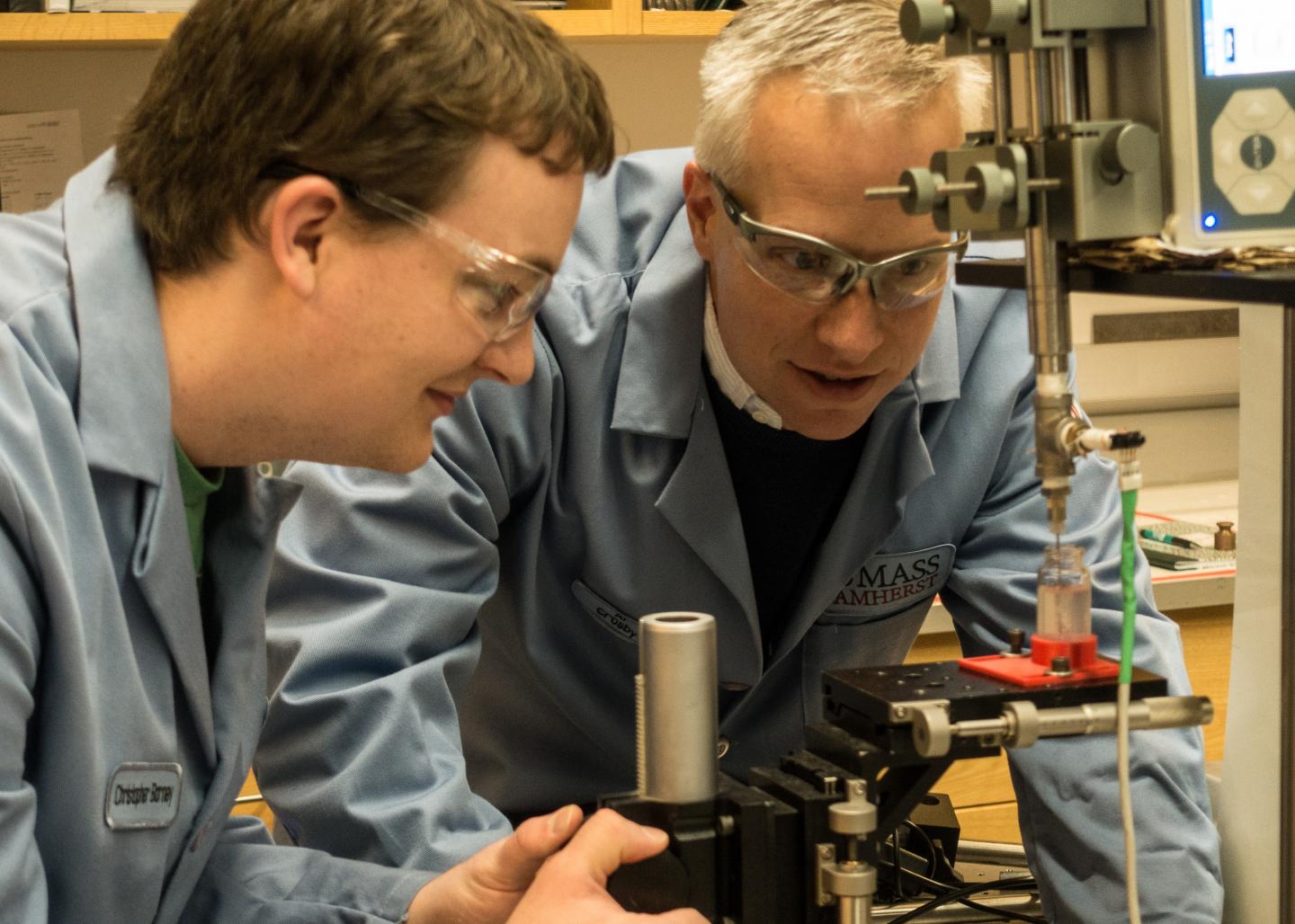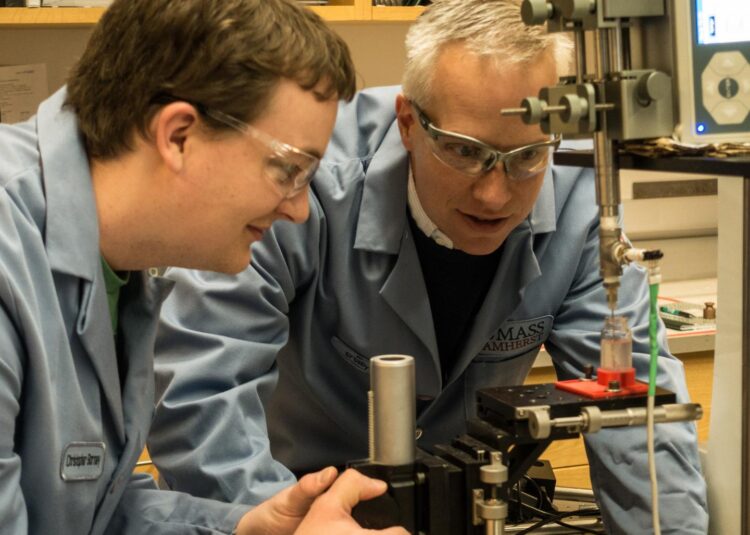UMass Amherst scientists and team offer perspectives on cavitation science

Credit: UMass Amherst
AMHERST, Mass. – A type of damage in soft materials and tissue called cavitation is one of the least-studied phenomena in physics, materials science and biology, say expert observers. But strong evidence suggesting that cavitation occurs in the brain during sudden impact leading to traumatic brain injury (TBI) has accelerated interest recently, say materials scientist Alfred Crosby at the University of Massachusetts Amherst and his team.
Crosby is the senior author of a new “Perspectives” paper this week in Proceedings of the National Academy of Sciences. The researchers intend it to spark fresh discussion and drive collaboration among new communities of biologists, chemists, materials scientists, physicists and others to advance knowledge. They define high-priority goals and point out new opportunities in the field of how matter deforms and flows with cavitation.
Crosby says, “We’re breaking down barriers that separate different scientific fields to spur progress in understanding cavitation – how it causes difficult-to-diagnose injuries or unseen failure in soft materials.”
He and Ph.D. students Christopher Barney and Carey Dougan, co-first authors of the paper, worked with chemical engineer Shelly Peyton, mechanical engineer Jae-Hwang Lee and polymer scientist Greg Tew at UMass Amherst. Others on the “CAVITATE” team are chemical engineer Rob Riggleman at the University of Pennsylvania and mechanical engineer Shengqiang Cai at the University of California, San Diego. Support is from a $2.6 million grant from the U.S. Office of Naval Research.
“While the world of cavitation seems to be historically the realm of engineers and physicists, there are growing opportunities for synthetic chemistry to contribute to the field,” the authors state. “The chemistry community will significantly aid both the mechanics and biology communities in understanding the physical principles of cavitation as well as using them to advantage in chemical reactions.”
Studied mainly in fluids for many years, cavitation is the creation and collapse of bubbles in liquids, Crosby explains. When bubbles collapse they force liquid into a smaller area, causing a pressure wave and increased temperature, which lead to damage. In a pump, cavitation can erode metal parts over time, for example. Cavitation inside artificial heart valves can damage not only the parts but the blood, he says. Microcavitation in the brain as a result of high-impact blows or being near an explosion are factors in TBI.
Crosby says the team’s perspective paper explores how cavitation can be used not only for preventing damage but also how to use cavitation as a unique tool for understanding soft tissues. For example, new methods use cavitation to study how properties like strength evolve in tissues. Co-first author Barney says the researchers hope to spur new research and development in medicine, chemistry, biology, mechanics and to new uses.
Crosby invented a new experimental tool called cavitation rheology for measuring the local mechanical properties of soft matter. He says, “We hope this will lead to advances in medical devices for diagnosing disease, novel devices for protective gear and new sustainable approaches for cleaning materials.”
Co-first author Dougan adds, “While cavitation is often thought of as something to be avoided, we aim to use it to benefit medicine and the development of new treatments.” For example, cavitation rheology can be used to measure the strength of interfaces within the brain, which is difficult to achieve with any other method, she notes. Specifically for TBI, the authors outline techniques for biologists to establish cavitation rheology as a tool for characterizing mechanical responses of soft biological tissues.
###
Media Contact
Janet Lathrop
[email protected]
Original Source
https:/
Related Journal Article
http://dx.





